Azzedine Alaïa: Secret Historian of French Fashion and Craft
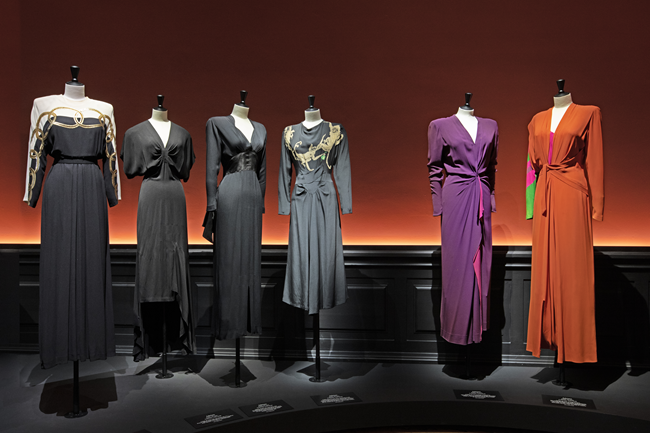
- SUBSCRIBE
- ALREADY SUBSCRIBED?
BECOME A BONJOUR PARIS MEMBER
Gain full access to our collection of over 5,000 articles and bring the City of Light into your life. Just 80 USD per year.
Find out why you should become a member here.
Sign in
Fill in your credentials below.
Who knew that hidden away in fashion designer Azzedine Alaïa’s atelier in the Marais district would be a collection of 20,000 pieces from other designers that he had accumulated for almost 50 years? Alaïa started his collection in 1968 with designs from Cristóbal Balenciaga and it became a hobby and passion for showcasing his admiration of the high level art and craft in clothes design.
The acquisitions expanded to include early haute couture designers from the late 19th century to Alaïa’s contemporary couturiers and ready-to-wear. Ultimately, it became a historical collection that highlights fashion’s changing styles, the craft and art behind design and, importantly, preserves fashion’s heritage.
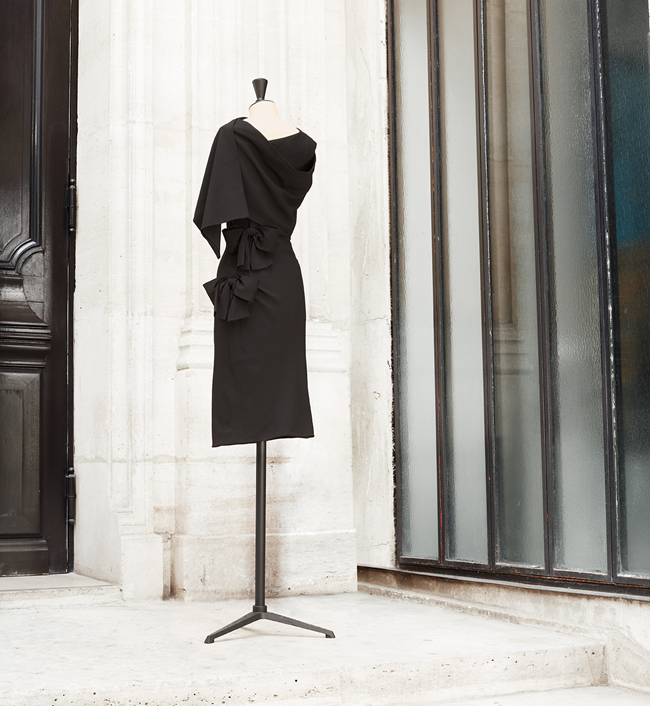
Cristobal Balenciaga, robe de cocktail, printemps-été 1960. © Patricia Schwoerer / rgmparis
No one ever saw the full extent of Alaïa’s collection in his lifetime. For the first time, 140 exceptional pieces shown on mannequins can be seen at the Azzedine Alaïa, Couturier and Collector exhibit at the Palais Galliera (Musée de la Mode) in Paris. The exhibit presents the history of fashion from Charles Frederik Worth to Jean-Paul Gaultier and is presented from the point of view of the clothes. The focus is not just on each designer’s style but on the art of fashion design itself. The beauty of each garment is seen in the construction and technical skills required in cutting, sewing, seam structure, color, texture and managing how materials from velvet to cotton are folded and hung. The result is seeing the creative, technical art behind excellent design.
This is seen in how skirts flow, how sleeves are designed – from puffy to sculptured, how bodices emphasize different parts of form and the sheer creativity of design that will provide the wearer with an exclusive image and style. The dresses range from the socially restricted designs of pre-WWI to the imaginative designs of contemporary designers who used zippers, box forms, raw edges, bias cuts and other creative ways to make the wearer look unique and classy. The exhibit makes it clear that the garments Alaïa collected were because he understood and respected the craft of making clothes which is key in developing the art of any dressmaker’s design and style.
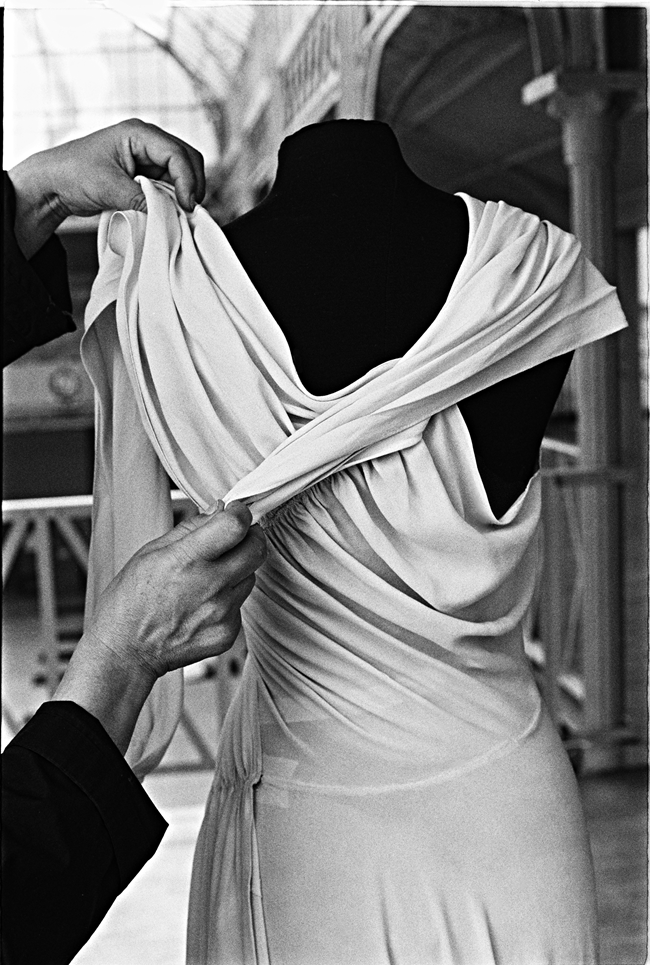
“Azzedine Alaïa, Couturier Collectionneur” at the Palais Galliera. © P.CANINO
Alaïa came to appreciate the craft in dress design as a young boy growing up in Tunis, Tunisia. His glamorous twin sister inspired his love of couture and a friend of his mother fed his creativity with copies of Vogue magazine. He worked as a dressmaker with his sister to pay for school supplies when he attended the Tunis Institute of Fine Arts. After graduation, he began working as a dressmaker’s assistant and in 1957 moved to Paris to work in fashion design.
He worked as a cutter and tailor starting with Christian Dior, but he had to leave when the Algerian War began. He then worked for Guy Laroche and Thierry Mugler until he opened his own atelier in the late 1970s where he privately dressed members from the so-called jet set including Greta Garbo and Marie-Hélène de Rothschild. He used this time to study how clothes were made by taking them apart and putting them back together including those by Madeleine Vionnet and Cristóbal Balenciaga.

Madeleine Vionnet, robe du soir « Petits chevaux », haute couture, vers 1924 © Patricia Schwoerer /rgmparis
Alaïa’s first ready-to-wear collection was in 1980 and his career skyrocketed when leading French magazines noticed. His admirers expanded to New York and his couturier business took off.
He was known for his inventive fine art and craft in design. He was a superb cutter and loved designing tight fitting, deftly tailored clothes that depended on fit, cut, seaming and assembling techniques to accentuate the body. Ultimately, he enjoyed commercial success with customers such as Tina Turner, Lady Gaga, Madonna, Marion Cotillard, Michelle Obama, and many more high profile women.

Chanel, robe du soir, haute couture 1937 © Patricia Schwoerer /rgmparis
The exhibit is presented in a historical timeline starting with 19th century designers like Worth, John Redfern and Jacques Doucet. Worth, who dressed royalty, is considered to the father of haute couture who invented the fashion system of shows and seasonal collections that is still in use today. The 1910s moved to the liberation of the body with designers such as Paul Poiret who invented the sheath dress and replaced the corset with whalebone high waisted belts, and Jeanne Lanvin who created the “robe de style” with ample skirts and her long black and ivory evening dresses with majestic cuts. The Roaring Twenties and 1930s brought the cubism style of Jean Patou with pleated skirts, twinsets and sweaters combined in different ways. Madeleine Vionnet took technique and craft to the ultimate by creating artfully beaded and folded dresses.
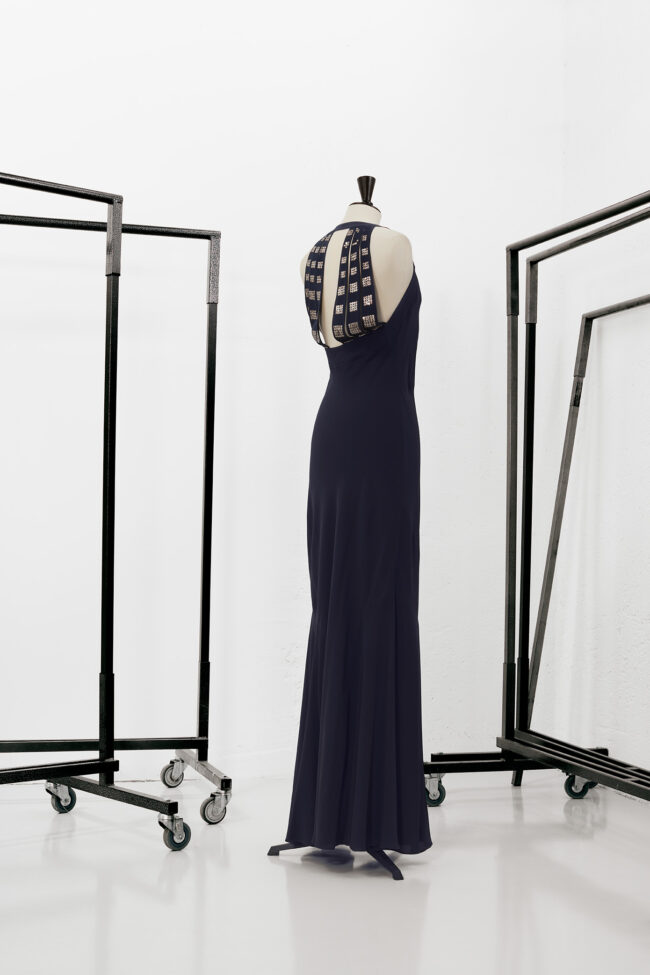
Jeanne Lanvin, robe du soir, haute couture, vers 1935 © Patricia Schwoerer /rgmparis
The 1940s and 1950s brought Claire McCardell who trimmed down structure and used simple textiles and motifs, and Jacques Fath with his asymmetrical draped sheath evening dresses. Later century design included the high tailoring of Pierre Cardin and Christian Dior’s flared skirts and pronounced shoulders. Yves Saint Laurent introduced the influence of the male wardrobe on female fashion and Gabrielle Chanel introduced the “small black dress” and tweed suits.
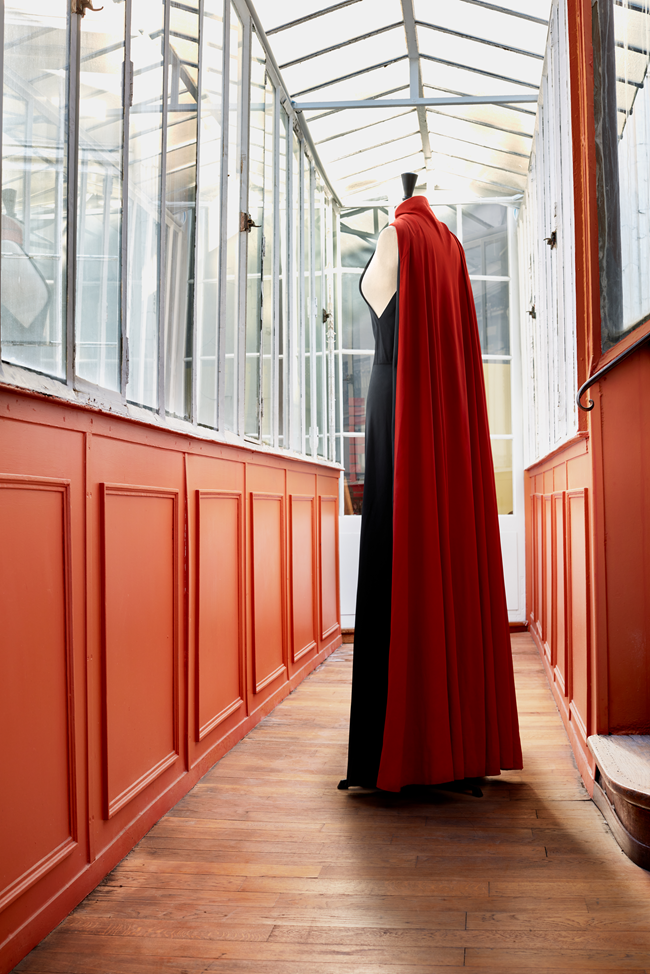
Madeleine Vionnet, robe et cape du soir, ayant appartenues à Agnès Ernst Graham, mère de Katharine Graham, directrice du Washington Post, 1937. © Patricia Schwoerer /rgmparis
The 1980s brought Alaïa’s contemporaries such as Mugler with his avant-garde architectural approach, Jean-Paul Gaultier with his unconventional designs and motifs including Madonna’s cone bra, and Vivienne Westwood who brought punk and new wave fashion into couture clothes. The exhibit also includes designers such as Yohji Yamamoto and Comme des Garçons who broke all fashion design rules but still required great craft technique to carry it off.
“For many years, I have bought and received dresses, coats, jackets that testify to the great history of fashion,” said Alaïa. “Preserving them has become for me a corporative attitude, a mark of solidarity towards those who, before me, wielded their scissors with pleasure and exactingness. It is my tribute to all the trades and all the ideas that these clothes convey.”

Comme des Garçons, robe, prêt-à-porter printemps-été 2014 © Patricia Schwoerer /rgmparis
A variety of key fashion designers are in the exhibit and the outfits are amazing. Viewers can get close enough to see the structure of each garment and the sewing work that was required. Beading, threading techniques and the tailoring of sleeves, bodices and skirts are all visible and highlight the hard work, design, construction and technical skills required to create the works of art called fashion design.
DETAILS
The exhibit runs through January 21.
Palais Galliera – Musée de la Mode
10 Av. Pierre 1er de Serbie, 16th
Tel: +33 01 56 52 86 00
The full-price ticket is 15€.
The museum is closed on Mondays. Late closures on Thursday evenings at 9 pm.
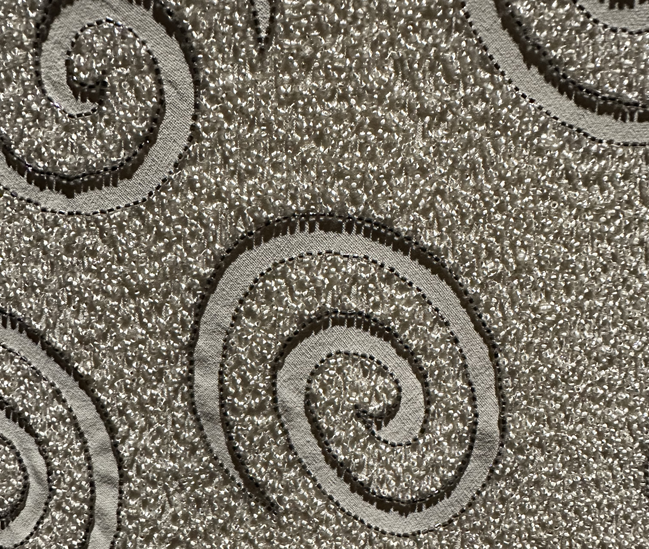
Close up of the beading work on the robe du soir by Madeleine Vionnet. Photo credit: Martha Sessums
Lead photo credit : AZZEDINE ALAÏA, COUTURIER AND COLLECTOR Exhibition, © Gautier Deblonde
More in Azzedine Alaïa, exhibition, fashion, Musee de la Mode, Museum, Palais Galliera

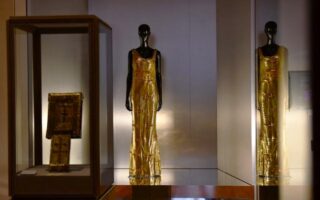

REPLY
REPLY